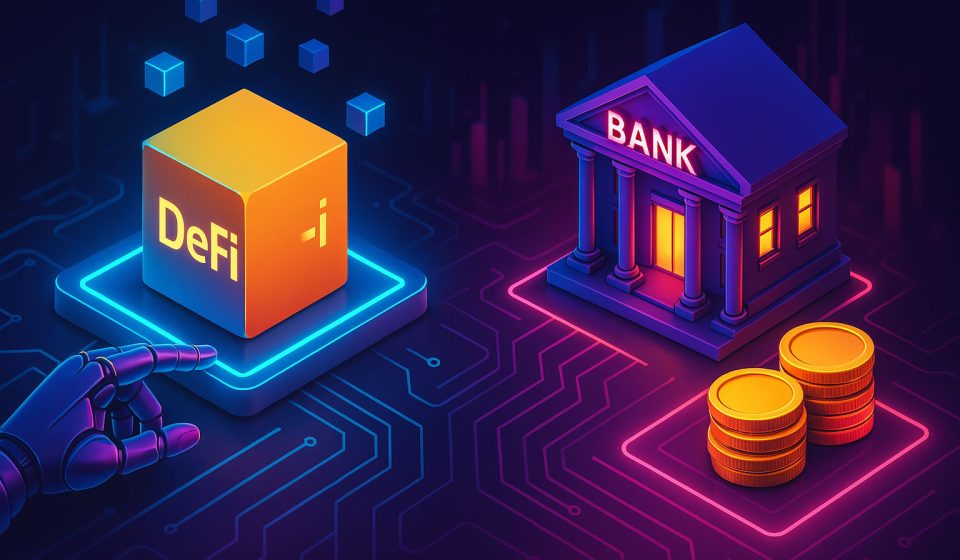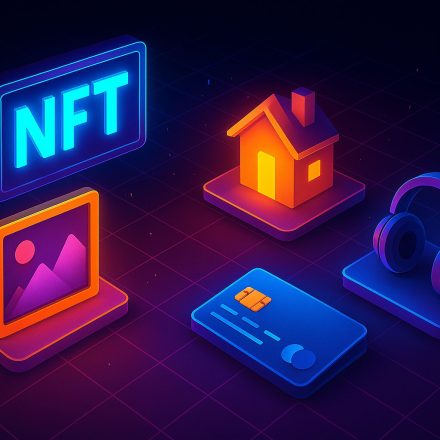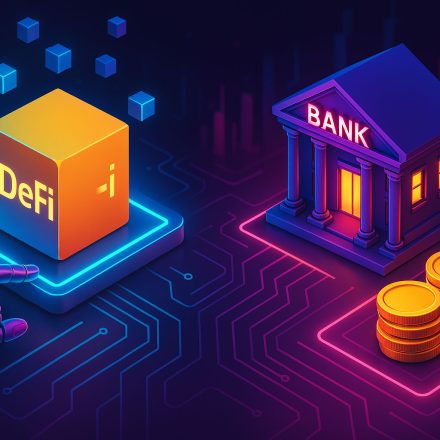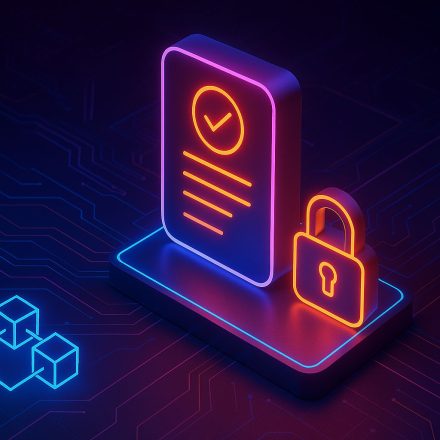
💸 DeFi vs Traditional Finance: Key Differences Explained
What is DeFi vs Traditional Finance?
As blockchain technology grows, many people wonder about DeFi vs Traditional Finance. What makes them different? Why is DeFi considered revolutionary?
Table Of Content
- What is DeFi vs Traditional Finance?
- 🏦 What is Traditional Finance?
- Key Features of Traditional Finance
- 🌐 What is Decentralized Finance (DeFi)?
- Key Features of DeFi
- 🔑 DeFi vs Traditional Finance: Main Differences
- 🔐 How Does DeFi Work Without Banks?
- 💰 Real-World Examples of DeFi and TradFi
- Traditional Finance Examples
- DeFi Examples
- 🚀 Benefits of DeFi Over Traditional Finance
- ⚠️ Risks and Challenges of DeFi
- 🧭 The Future of Finance: Can DeFi Replace TradFi?
- 🔗 Learn More
To understand the future of finance, it’s important to know how decentralized finance (DeFi) compares with traditional finance systems like banks, payment providers, or stock exchanges.
In this guide, we’ll break down the major differences between DeFi and traditional finance — in a clear and beginner-friendly way.
🏦 What is Traditional Finance?
Traditional finance (TradFi) refers to the banking, financial, and investment systems we’ve used for decades. These systems are controlled by centralized institutions like:
- Banks
- Governments
- Central banks
- Stock exchanges
- Payment processors
Key Features of Traditional Finance:
- Centralized control
- Strict regulations
- Need for trusted intermediaries
- KYC (Know Your Customer) and identity checks
- Limited access for unbanked people
🌐 What is Decentralized Finance (DeFi)?
DeFi is a new financial system built on blockchain technology. Instead of banks or companies controlling your money, DeFi uses smart contracts — self-executing programs on blockchain networks like Ethereum.
DeFi lets anyone with an internet connection access financial tools without a bank account.
Key Features of DeFi:
- No intermediaries like banks
- Smart contracts handle transactions
- Open to everyone globally
- No identity checks required
- Built on transparency and decentralization
🔑 DeFi vs Traditional Finance: Main Differences
| Feature | Traditional Finance (TradFi) | Decentralized Finance (DeFi) |
|---|---|---|
| Control | Centralized (Banks, Governments) | Decentralized (Smart Contracts) |
| Access | Restricted, Requires KYC | Open to anyone with internet |
| Speed of Transactions | Slow, days for cross-border | Fast, often within minutes |
| Fees | High banking & service fees | Lower fees, network costs only |
| Transparency | Low, closed systems | High, open-source smart contracts |
| Availability | Limited hours, closed on weekends | 24/7 available globally |
🔐 How Does DeFi Work Without Banks?
Instead of banks or payment providers, DeFi uses smart contracts. These are lines of code stored on blockchains that automatically execute transactions when conditions are met.
Example:
- In TradFi → You need a bank to send money.
- In DeFi → A smart contract sends money when both parties agree, with no human involvement.
💰 Real-World Examples of DeFi and TradFi
Traditional Finance Examples:
- Using Visa or Mastercard to pay
- Getting a loan from a bank
- Trading stocks on the NYSE
DeFi Examples:
- Trading crypto on Uniswap
- Earning interest on Aave
- Borrowing without a bank on Compound
- Using stablecoins like USDC or DAI
🚀 Benefits of DeFi Over Traditional Finance
- No need for banks or intermediaries
- Global access for anyone
- Faster transactions
- Lower fees
- Transparent operations
- Programmable money with smart contracts
⚠️ Risks and Challenges of DeFi
Despite its advantages, DeFi has its risks:
- Smart contract bugs
- Hack risks
- Volatile crypto prices
- No consumer protection (like banks offer)
- Regulatory uncertainty
It’s essential to do your research before using DeFi platforms.
🧭 The Future of Finance: Can DeFi Replace TradFi?
While DeFi offers exciting possibilities, it’s unlikely to fully replace traditional finance soon. Instead, a hybrid future is more realistic, where:
- Banks adopt blockchain technology
- Regulators create clearer rules for DeFi
- Users benefit from both systems working together
Some financial institutions already explore decentralized technology for faster payments and transparency.
🔗 Learn More
Internal Link → Decentralized Finance (DeFi)
External Link → https://www.coindesk.com/learn/what-is-defi/














